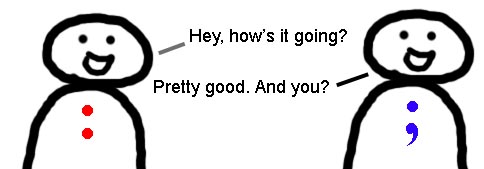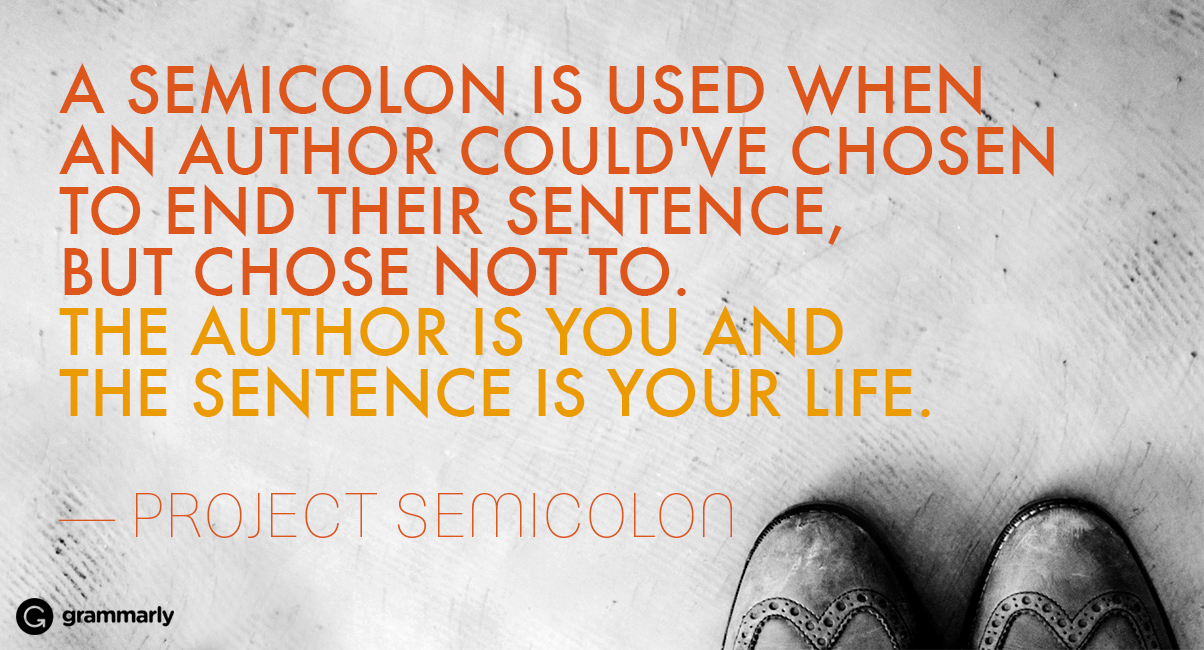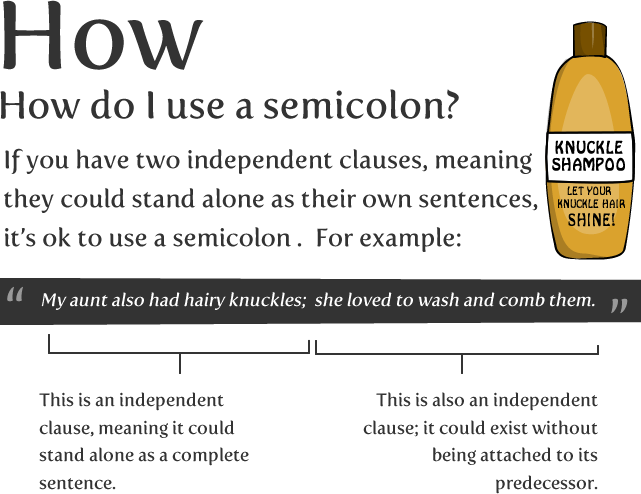

Here is another example that includes parentheses (brackets): (Notice how parentheses (brackets) can be used to add information within the list items.)
You should choose ham, chicken, or char-grilled vegetable sandwiches cups of tea, Bovril, or coffee (if you don't mind them lukewarm) or red wine (one of the few options that's drinkable when lukewarm). Bread, milk, butter, and cheese from the corner shop lamb and beef from the market and onions from your uncle's stall. (There are no semicolons in this list because none of the list items contains its own comma.) Bread, milk, butter, cheese, lamb, beef, and onions.  I have been to Newcastle in the North Bristol in the South and Cromer, Norwich, and Lincoln in the East. This time, only one of the list items contains commas, but that's enough to warrant using semicolons as the separators. Not all of the list items must contain commas to justify using semicolons as separators - only one does. I have been to Newcastle, Carlisle, and York in the North Bristol, Exeter, and Portsmouth in the South and Cromer, Norwich, and Lincoln in the East. It is now appropriate to use semicolons as separators to outrank those commas. This time, the list items themselves contain commas. Cromer, Norwich, and Lincoln in the East. Bristol, Exeter, and Portsmouth in the South. Newcastle, Carlisle, and York in the North. Let's imagine that our three list items looked like this: The three list items for the sentence above are as follows: I have been to Newcastle, Carlisle, and York. Items in lists are usually separated with commas. However, if one or more of those list items had a comma, semicolons could be used to separate the list items to "outrank" the commas in the list items.) (There are no semicolons in this list because none of the list items contains a comma. Normally, we use commas to separate the items in a list.
I have been to Newcastle in the North Bristol in the South and Cromer, Norwich, and Lincoln in the East. This time, only one of the list items contains commas, but that's enough to warrant using semicolons as the separators. Not all of the list items must contain commas to justify using semicolons as separators - only one does. I have been to Newcastle, Carlisle, and York in the North Bristol, Exeter, and Portsmouth in the South and Cromer, Norwich, and Lincoln in the East. It is now appropriate to use semicolons as separators to outrank those commas. This time, the list items themselves contain commas. Cromer, Norwich, and Lincoln in the East. Bristol, Exeter, and Portsmouth in the South. Newcastle, Carlisle, and York in the North. Let's imagine that our three list items looked like this: The three list items for the sentence above are as follows: I have been to Newcastle, Carlisle, and York. Items in lists are usually separated with commas. However, if one or more of those list items had a comma, semicolons could be used to separate the list items to "outrank" the commas in the list items.) (There are no semicolons in this list because none of the list items contains a comma. Normally, we use commas to separate the items in a list. 
(Notice how semicolons are used to separate the list items.) John, the baker Simon, the policeman and Toby, the architect. If this list were written in running text (i.e., not as bullet points), it could be written like this: (In this list, each one of three list items has its own comma, but to justify using semicolons, only one has to have a comma.) Use semicolons in a list to separate list items if one of the list items has a comma.







 0 kommentar(er)
0 kommentar(er)
